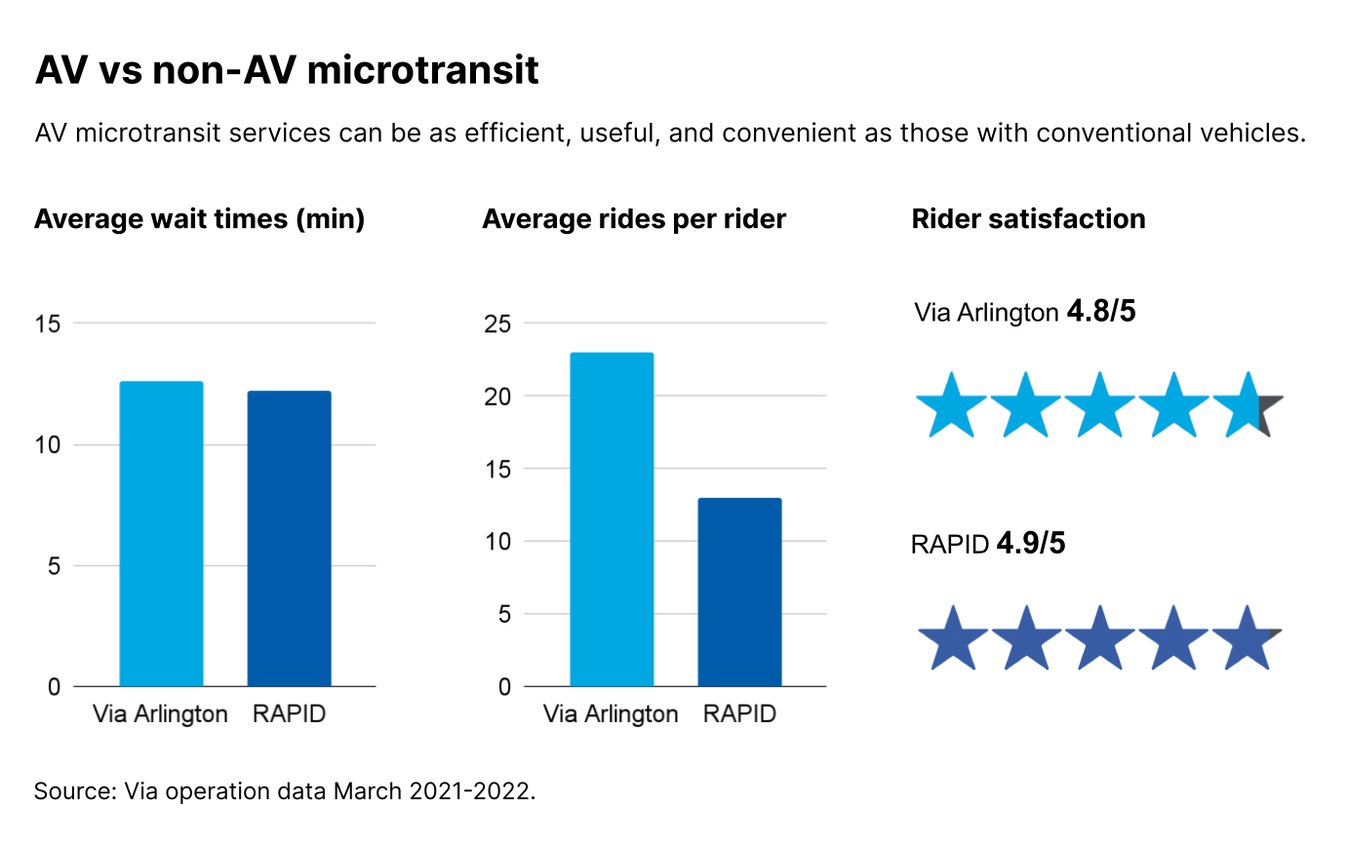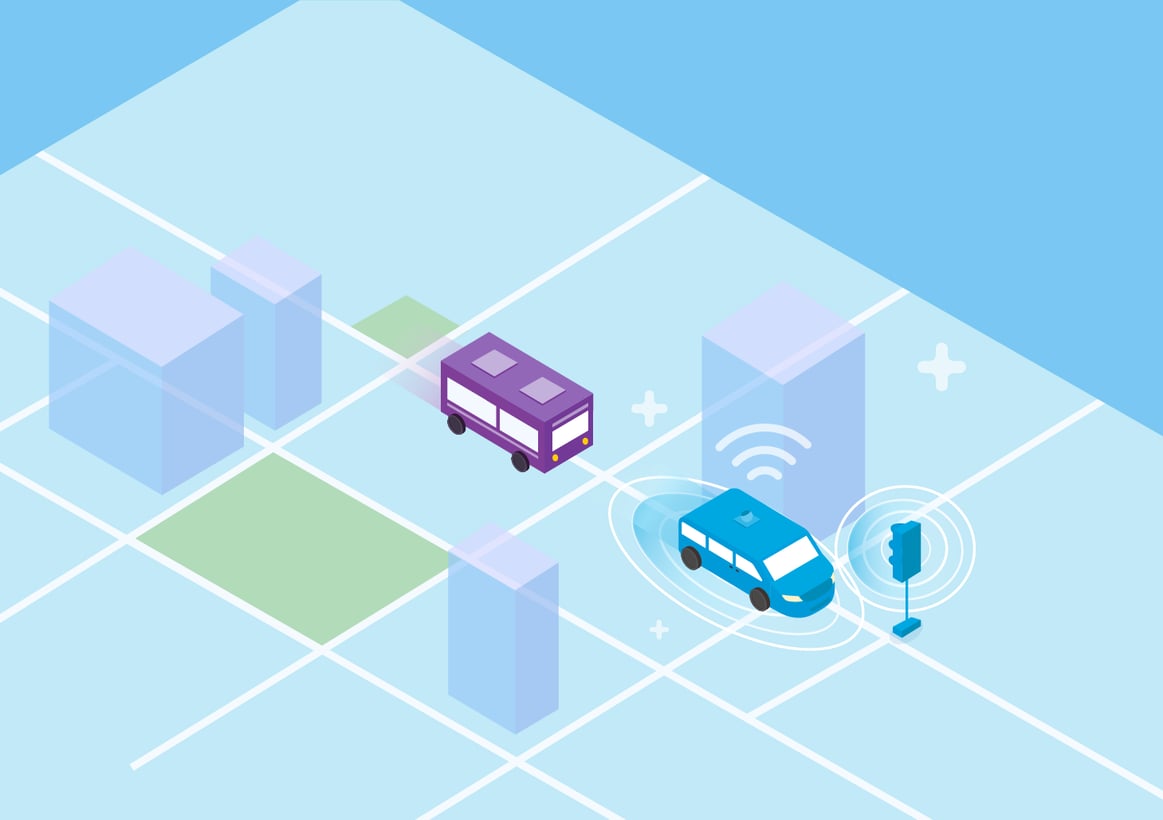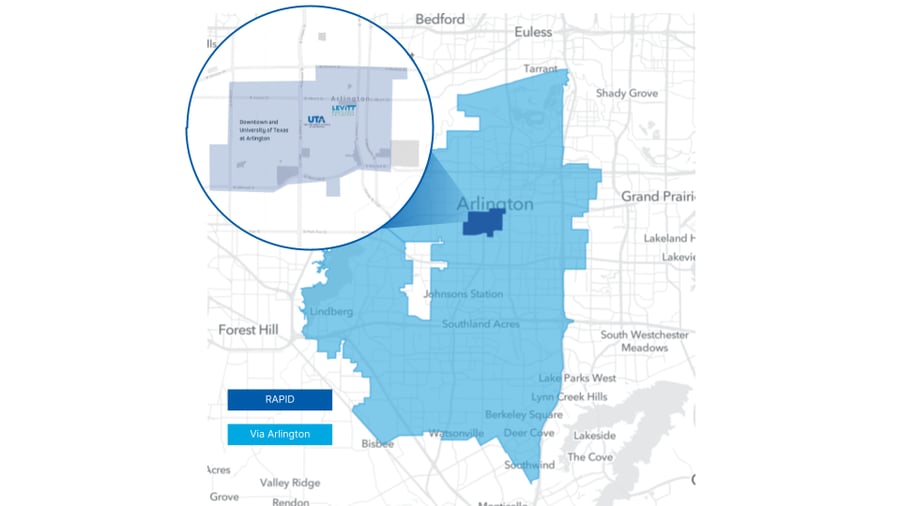From public streets of Las Vegas to the downtown areas in Michigan , don’t be surprised if you see an autonomous vehicle (or “AV”) on a road near you. However, with autonomous technology advancing quickly, technical development doesn’t necessarily translate to public confidence. According to AAA’s annual autonomous driving survey, 71% of people are afraid to ride in a fully self-driving car. With grandiose — and unfulfilled — claims made year after year, it’s understandable that Americans may be skeptical about this new form of mobility. But the answer to increasing confidence in AVs may be surprisingly simple: just give people a chance to ride.
Greater access, greater acceptance.
In the spring of 2021, the City of Arlington, Texas introduced RAPID, the nation’s first on-demand, autonomous public transit service, into its transportation network through a partnership with Via and May Mobility. Accessed by the same mobile app and phone-booking line as Via Arlington, the citywide conventional microtransit service, RAPID has achieved the same high-quality of service as its non-AV counterpart. With a 4.9 out of 5 rider satisfaction rating, it’s clear that the Arlington community has embraced autonomous public transit.
RAPID’s service zone is nested within Via Arlington’s broader citywide service zone.
Since launch, the City of Arlington, the University of Texas at Arlington (UTA) and Via jointly conducted surveys to better understand riders’ and residents’ attitudes toward RAPID. Researchers found that having the opportunity to interact with automated technology in public transit can help remediate initial fears and open the door for greater acceptance.

Compared to the national benchmark reported by AAA, where less than 30% of people feel confident in riding AVs, over 80% of Arlington riders reported feeling safe when riding RAPID and feel confident about an AV’s ability to interact with other vehicles on the road. The majority of riders also felt secure while sharing the vehicle with other passengers, suggesting this confidence also extends to AVs that are shared, not just those that are ridden privately.
Arlington residents’ acceptance of AVs is likely influenced by a history of exposure to autonomous technology: the City implemented two previous AV pilot programs with EasyMile and Drive.ai prior to launching RAPID in March 2021. The existence of these pilots, operating nearby and incident-free, may have enhanced the perception of AV safety among Arlington residents when compared with the general population.
 Photo provided by The City of Arlington
Photo provided by The City of Arlington
The true value of AVs, through public transit.
But RAPID demonstrates that when AVs are integrated as part of public transportation networks more people have a chance to experience autonomous transit. Due to their operation as stand-alone circulator routes, the EasyMile and Drive.ai pilots reached a smaller portion of the local population, with only 5% of Arlington residents surveyed reporting having used these two services.
On the other hand, 40% of residents surveyed had used RAPID at least once. In addition to serving more riders, AVs as part of public transit can also increase the diversity of riders served, including riders with limited mobility, those living below the poverty line, or those unfamiliar with technology. To that end, RAPID includes a wheelchair-accessible AV and a rider app with accessibility features, as well as dial-in bookings for those without a smartphone and reduced fares for students.
Leveraging tech-enabled public transit has not only allowed RAPID to maximize community exposure to AVs, but it also has enabled riders to experience autonomous transit as useful, convenient, and efficient. With Via’s citywide public transit app, riders can book trips on-demand in AVs or conventional vehicles within a single interface, with the same payment method and fare price. And, once booked, riders are optimally routed to their destinations, with Via’s algorithms accounting for real-time conditions to minimize wait times and trip durations.
In just one year, RAPID has served more than 28,000 trips to residents, university students, and visitors around downtown Arlington and UTA’s campus. The majority (over 70%) of trips started or ended at essential destinations, including places of employment, education, and healthcare.

High-quality service, repeat riders.
UT Arlington’s data also indicates that a high-quality, seamless rider experience plays a key role in how people feel about driverless technology. In a focus group study conducted prior to RAPID’s launch, three distinct user groups — the general public, university faculty and students, and people with disabilities — identified service accessibility, flexibility, and reliability as the factors that most strongly shape their demand for AV services.
In addition, they reported that the boarding process, vehicle speed, cleanliness, and temperature could influence their usage of AVs. Ensuring a positive rider experience is critical as many transit riders may have never set foot in an AV before, and their first touchpoint can influence their perception of autonomous technologies going forward.
As a result, RAPID is furnished with customer-facing tools designed to create a safe, comfortable, and enjoyable rider experience — from trip start to end. The Via Arlington rider app facilitates visibility into multimodal transit options and live customer support. And, Via’s in-vehicle screens display QR codes for boarding confirmation and real-time trip information for riders, 89% of whom reported that the process of boarding the vehicle was easy. Finally, the ability to gather data on riders’ experience through custom surveys and post-ride ratings, enables RAPID to continuously optimize for riders’ comfort, safety, and convenience. The service boasts an average rider rating of 4.9 out of 5 stars, with nearly 90% of riders said they would likely ride RAPID again in the future.
In addition, AVs can bring more people into mass transit, more frequently. 4% of the participants reported they haven’t ridden Via Arlington or other forms of public transportation in the city, but AVs helped get them on board. Once riders realize it’s a good riding experience, they stick with it — indeed, 32% of riders used RAPID more than six times; on average, every rider finished 13 rides, showing remarkable service loyalty.
The future of AVs in Arlington and beyond.
Unlike single-occupancy, private AVs, AVs integrated into existing public systems can help address sustainability, equity, and accessibility goals. While the legislative groundwork around autonomous mobility is being laid, experts agree that the full potential of AVs to revolutionize transportation can only be realized if they serve as part of public transit. RAPID has been so successful that the city received additional funding to continue the service through at least 2024, further bolstering its mission to bring innovative, convenient mobility options to the Arlington community.
While self-driving technology continues to mature, cities and agencies have an opportunity today to strengthen community confidence in this new mobility technology by providing useful, convenient, and accessible autonomous transit services. Learn more about how Via is helping transit partners across the globe do just that .





